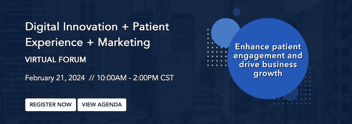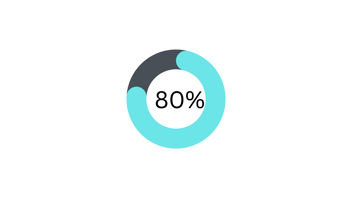With recent reports that margins in healthcare continue to be in the red, concrete return on investment has become critical for any purchase at a health system. When it comes to patient engagement and experience initiatives, tracking a hard ROI can be challenging. It often requires a mix of health system and vendor data and that data isn't always readily available.
At a recent session at the Becker's Annual Meeting, one patient experience executive said, “Sometimes something that makes sense financially doesn’t make sense for patients and/or staff.” He went on to say that while there may not always be a way to track a hard ROI on some patient experience initiatives, he believed that anecdotally we know that better experience does create loyalty and retention. So, seeing improvements on various patient surveys can indicate there will be an ROI down the road.
It's safe to assume that better experience for patients and staff does increase loyalty, but many still need something more concrete. To establish a hard ROI, health systems need to have baseline data to compare against. Here are some recommendations for areas to look at to start tracking that data and discuss as possible cost impact centers.
- Call center volume: Call centers are a big cost center for health systems. Being able to reduce call volume by even five or 10 percent can make a big difference. Any call center should be tracking total number of calls, time to resolve calls, and hold times. If you aren't already, start tracking calls by topic, question, or concern to identify the top issues. Data shows the number one reason for calls is related to appointments, including scheduling and directions. A mobile platform can include not just appointment scheduling for primary care and specialists but options to see wait times and locations for urgent care and ED with the ability to save a spot. With wayfinding included in the mobile experience, patients can easily access directions from home to the point of care. For a health systems with a call center of 300 agents, servicing about four million calls a year, a 10% decrease would result in a savings of over $700,000 a year. By tracking call reasons before and after the addition of a mobile platform and/or wayfinding, it can be easy to see the impact.
- Missed appointments and late arrivals: Missed appointments have always been a problem in healthcare. Most organizations today track their no-show rate and have programs in place like electronic reminders to try to reduce it. Late arrivals are another story. Most organizations don't track the impact, although it can be big. Late arrivals can result in cancelling the appointment all together or putting the entire schedule behind. With the right mobile platform, home to parking to the point of care wayfinding can be embedded in appointment reminders. With average no-show rates of 15-20% in most healthcare settings, even a small impact can be meaningful. For example, a health system with three million appointments a year, an average appointment value of $300, and a no show rate of 15%, the annual loss would be $135,000,000. Even reducing that by one percent with improved wayfinding would save $1.35 million a year. Tracking no-show rates and losses before and after adding a mobile solution can help show the value. Adding tracking for late arrivals is an area of impact that may other wise be missed and is worth evaluating.
- Referral leakage: One-third of patients are referred to specialists each year. Eighty-seven percent of healthcare leaders say that referral leakage, or loss of those patients outside the hospital network, is a major issue for them—costing them 10-20% of total revenue each year. Most health systems lose $200-500 million a year to their competitors. A mobile engagement strategy designed to slow referral leakage can have a big impact. The right platform offers all the digital tools patients need to manage their healthcare. As a result, the reuse rate is often very high. For Gozio clients, the reuse rate is about 70%. Patients often don't realize they have gone out of the system. They are simply looking online for the service they need. Encouraging them to download and use the health system's app to search for care keep them in the network. For a system losing $200 million a year, even capturing a small percentage of patients who might have gone elsewhere can have an impact. Just reducing leakage by one percent would recoup two million dollars a year.
- Lost patients and staff interruptions: When patients get lost, they turn to your staff. In the past, health systems often encouraged staff to not just stop and help but walk patients to their destination. That is becoming a burden many hospitals can't afford. About 30% to 40% of visitors ask for directions from staff. The average disruption is three minutes—more if staff walk them to their locations. One study estimated staff each spend 40 hours a year giving directions, costing the hospitals over $200,000 a year. Today, solving this problem is as much about reducing the burden of staff as it is creating a better experience for patients. Losing staff to burnout may actually be one of the biggest financial challenges health systems are facing today.
Speaking of staff burnout and addressing satisfaction and retention, that can be an added bonus and area for ROI with a mobile platform. When a health system implements a mobile platform, the best practice is to have staff download the app and use it themselves so they can show patients how to use it. That can also result in improving staff experience. It may be something as simple as being able to find their way around a new facility or mark their parking spot when they get to work. Or it could be a bigger impact like offering an option for staff to authenticate into a unique experience on the app that is just for them where they can access all the same tools as patients as well as employee-specific tools like schedules or payroll. Improving staff experience and retention can have a big impact on the bottom line.
These are some of the areas where a mobile platform can make an impact, but it is important to remember that to see the value and return on investment, you need benchmark data to start with. If you have that and a process in place to monitor changes and improvements, then you are bound to see that return with the right solution.

